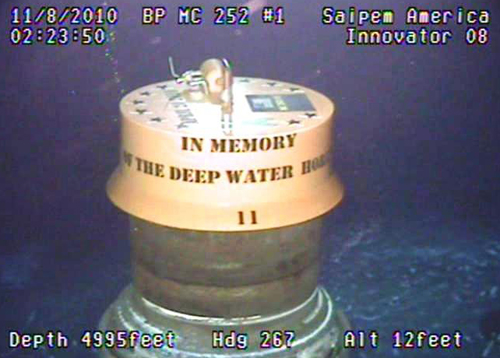gCaptain -
The Deepwater Horizon tragedy teaches the general public and regulators about the safety culture in the offshore industry and the environmental risk associated with deepwater drilling. As a seagoing professional, here are five things you can do to keep you safer while working at sea.
Proximity And PreparednessThe physical and mental state of the Deepwater Horizon survivors varied considerably from minor cuts and burns to traumatic head injury and panic. The extent of these injuries where directly related to two factors; proximity to the initial explosions and personal preparedness.Brent Mansfield, the rig’s 1st Engineer and graduate of the US Merchant Marine Academy, was as well trained as anyone on the rig in emergency procedures yet he was the most critically injured with a deep fracture to his skull. That night Mansfield was in the Engine Control Room adjacent to the first explosion which occurred in a main diesel generator. There is little Brent could have done to avoid his injuries, his physical proximity to the explosion being the primary cause of his injuries.The second most critically injured that night was Buddy Trahan who had suffered multiple bone fractures and significant burns after being pinned beneath a cabinet near the explosion. The fractures Trahan received where directly related to his proximity to the blast but the burns might have been avoided if he had been wearing fire resistant coveralls.Lower on the list of injured persons was the rig’s OIM who had been taking a shower in his cabin, a fair distance from the first explosion. According to his testimony he found a towel and some clothes but struggled to find his boots and coveralls in the darkness of his cabin. He had no communication with the bridge and, therefore, was unaware of the dangers he would encounter. During his escape to the bridge subsequent explosions blew insulation and debris onto him, essentially tar and feathering his body and rendering him functionally blind.Apart from their initial proximity to the flames a second factor determined the types of injuries these three individuals suffered, the time between knowledge of a problem and the time of injury. Brent Mansfield had the shortest interval of time with only seconds between high gas alarms sounding and unconsciousness. He had no time to prepare.Buddy Trahan, having checked in with the subsea engineer minutes before the explosion, was the first to know something was wrong that night yet he did not know the immediacy of the problem in time to don coveralls or other PPE that would have prevented burns. The OIM was relatively safe in his cabin during the first blast with a modest amount of time to prepare himself yet he received his injuries during the escape.

Posted via http://batavia08.posterous.com batavia08's posterous
.jpg)
No comments:
Post a Comment